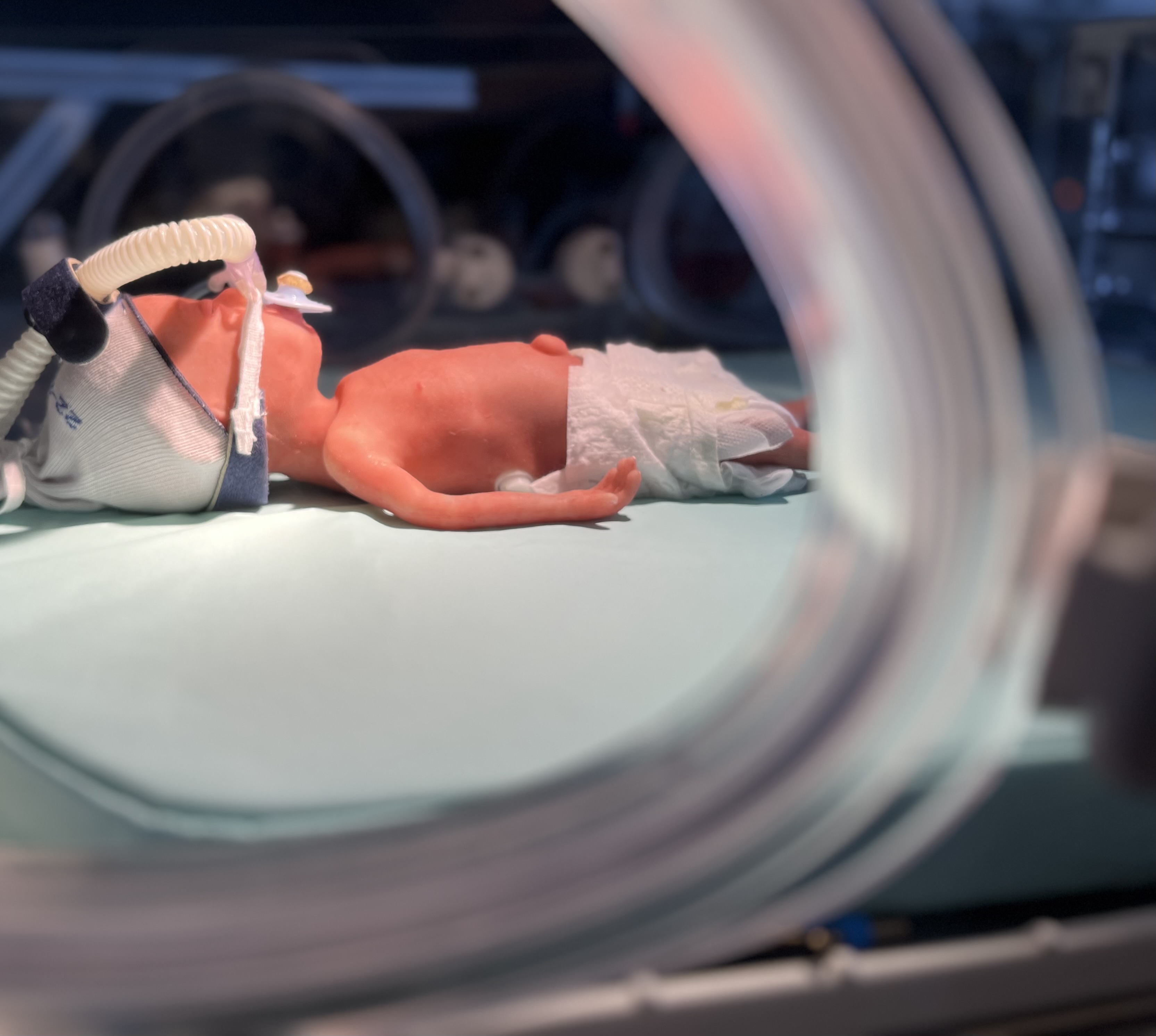
Preterm infants with respiratory issues urgently need better treatment options. Every year, approximately 14.8 million babies worldwide are born too early, and around one-third of them suffer from breathing difficulties. The risk of developing bronchopulmonary dysplasia (BPD) is particularly high – an illness that increases mortality and can cause long-term complications such as reduced lung function and growth delays.
The current invasive standard therapy with glucocorticoids is only initiated once lung problems have already developed, due to severe side effects – often making treatment too late. Inhalation therapy could provide a gentler, preventive alternative, but conventional methods have a major drawback: up to 96 percent of the drug is lost within the ventilation system.
This is where the innovative bypass technology comes in. Developed and patented by researchers at Fraunhofer ITEM, it delivers a highly concentrated aerosol directly into the airways, improving drug deposition by up to 3.2 times compared to existing methods. Since December 2024, further development of this technology has been supported by an EXIST Research Transfer grant of €1.5 million. This funding program, provided by the German Federal Ministry for Economic Affairs and Climate Action (BMWK), helps research-based projects from universities and non-university research institutions transition into the market.
The focus is on optimizing the prototype, particularly in terms of usability and clinical application. Additionally, a clinical proof-of-concept study will begin in April 2025 in collaboration with Hannover Medical School and the University Medical Center Schleswig-Holstein. This study will, for the first time, evaluate the safety and efficacy of the technology under real-world conditions. It is funded with €1.3 million through the Institute for Biomedical Translation in Lower Saxony, which aims to translate cutting-edge life sciences research into practical applications.
With this funding, the project can take key steps toward market readiness by 2029. Beyond technological advancements, integrating clinical partners and meeting regulatory requirements will be crucial. In the long term, the technology could also be adapted for other patient groups, such as adults with chronic respiratory diseases like COPD. The goal of InhalPlus: to improve the treatment of preterm infants, enhance their survival chances, and shorten hospital stays.
 Fraunhofer Institute for Toxicology and Experimental Medicine
Fraunhofer Institute for Toxicology and Experimental Medicine
